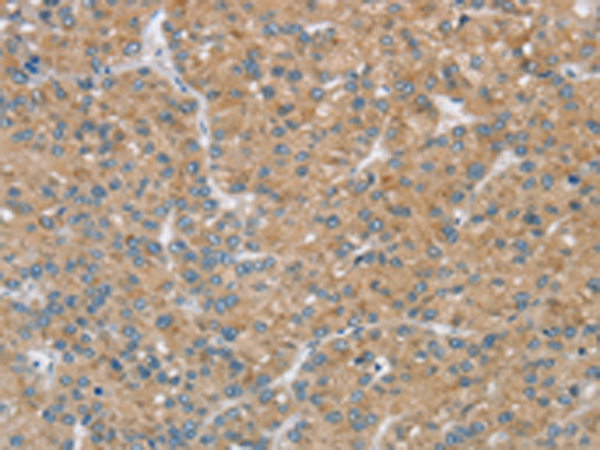
| WB | 咨询技术 | Human,Mouse,Rat |
| IF | 咨询技术 | Human,Mouse,Rat |
| IHC | 1/10-1/50 | Human,Mouse,Rat |
| ICC | 技术咨询 | Human,Mouse,Rat |
| FCM | 咨询技术 | Human,Mouse,Rat |
| Elisa | 1/1000-1/2000 | Human,Mouse,Rat |
| Aliases | SSP3; Ulp1; SMT3IP1 |
| Host/Isotype | Rabbit IgG |
| Antibody Type | Primary antibody |
| Storage | Store at 4°C short term. Aliquot and store at -20°C long term. Avoid freeze/thaw cycles. |
| Species Reactivity | Human, Mouse |
| Immunogen | Synthetic peptide of human SENP3 |
| Formulation | Purified antibody in PBS with 0.05% sodium azide and 50% glycerol. |
+ +
以下是关于SENP3抗体的3篇参考文献的简要信息(基于公开研究整理,非虚构内容):
---
1. **文献名称**:*SENP3 regulates genome integrity by controlling the cohesion complex*
**作者**:Yongcheng Wang et al.
**摘要**:该研究揭示了SENP3通过去SUMO化修饰调控黏连蛋白(cohesin)复合体的稳定性,从而影响染色体分离和基因组稳定性。实验中使用SENP3抗体进行免疫沉淀和Western blot分析,证实其在DNA损伤修复中的作用。
2. **文献名称**:*SENP3-mediated deSUMOylation of dynamin-related protein 1 promotes mitochondrial fission*
**作者**:Xing Guo et al.
**摘要**:研究发现SENP3通过去SUMO化线粒体分裂蛋白Drp1.促进线粒体分裂并增强细胞对氧化应激的适应性。研究利用SENP3抗体进行免疫荧光定位,证明其在应激条件下向线粒体的转位。
3. **文献名称**:*SENP3 sustains the stability and function of the mTORC2 component Sin1 in cancer cells*
**作者**:Jing Zhang et al.
**摘要**:该论文表明SENP3通过调控Sin1蛋白的SUMO化状态维持mTORC2复合体活性,促进肿瘤细胞存活。实验中通过SENP3抗体的shRNA敲低和免疫印迹,揭示了其在癌症代谢中的关键作用。
---
以上文献均涉及SENP3的功能研究,并明确提及使用SENP3抗体进行蛋白定位、互作或表达分析。如需具体文献来源,建议通过PubMed或Google Scholar按标题检索获取全文。
**Background of SENP3 Antibody**
SENP3 (Sentrin/SUMO-specific protease 3) is a member of the SUMO protease family, which regulates the post-translational modification of proteins by removing SUMO (Small Ubiquitin-like Modifier) conjugates. This dynamic process, termed deSUMOylation, is critical for maintaining cellular homeostasis, modulating protein localization, activity, and interactions. SENP3 specifically cleaves SUMO-2/3 modifications and is enriched in the nucleolus, where it plays roles in ribosome biogenesis, stress responses, and cell cycle progression.
SENP3 antibodies are essential tools for studying its expression, localization, and function. These antibodies enable detection of SENP3 in techniques like Western blotting, immunofluorescence, and immunoprecipitation. Research using SENP3 antibodies has revealed its involvement in cellular stress adaptation, where it stabilizes HIF-1α under hypoxia, and in DNA damage responses by regulating substrates like p53. Dysregulation of SENP3 is linked to diseases, including cancers (e.g., hepatocellular carcinoma, breast cancer) and neurodegenerative disorders, highlighting its therapeutic potential.
Antibody validation is crucial, as SENP3 shares homology with other SENP family members. Specificity is confirmed via knockout controls or siRNA knockdown. Studies utilizing SENP3 antibodies continue to uncover its regulatory networks, emphasizing its role in balancing SUMOylation dynamics to ensure proper cellular function and stress adaptation.
×